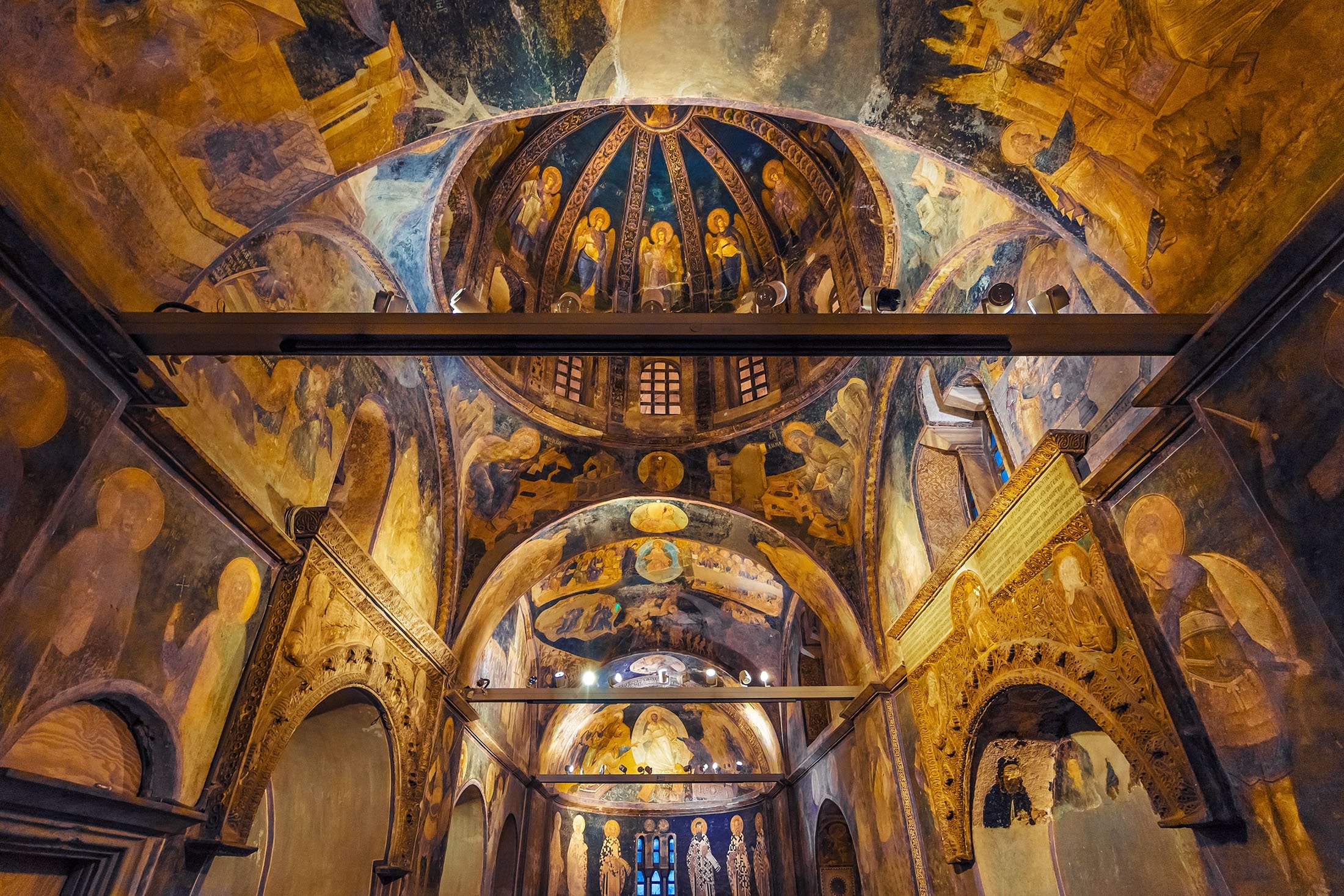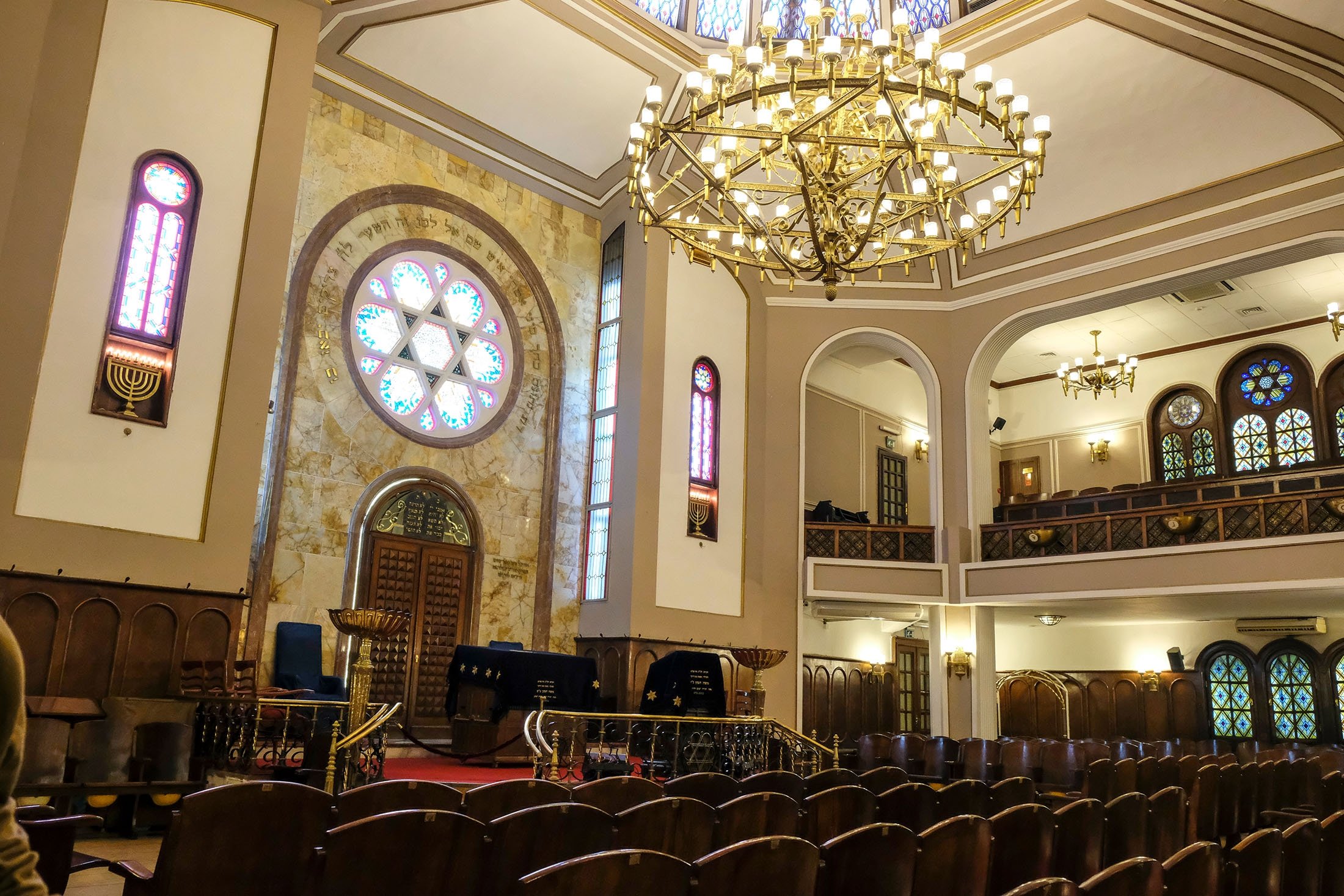© Turkuvaz Haberleşme ve Yayıncılık 2024
Istanbul attracts many tourists with its historical past, cultural richness and diverse religious attractions. Visitors can see the unique architecture and historical symbols of Christian churches while discovering the enchanting beauties of the Hagia Sophia Grand Mosque and the Blue Mosque. Likewise, under the view of the Galata Tower, they can find traces of the Jewish community in districts such as Balat and Şişli.
This multicultural environment makes itself evident in the streets and neighborhoods of Istanbul. People of different ethnic groups, religions and cultures live and interact with each other. This creates an atmosphere of rich cultural diversity and tolerance. People share different languages, customs and dishes, participate in cultural events and try to understand each other's lifestyles.
We talked about mosques in the first article of our series, today let's talk about churches, chapels and synagogues.
The church is the building where worship and funeral rituals are carried out in Christianity. In time it replaced the Greek "ekklesia," meaning "gathering of those summoned," as the word used for the Christian building with Latin dying out.
The church is a place where the Christian community gathers to worship God, pray, hold religious rites and share their beliefs.
Churches often contain a sanctuary and prayer hall where religious services are held. The halls host sermons, prayers and hymns. Churches can also be a place where the Christian community comes together, and where religious education and training activities are carried out. Religious education programs, schools and social events for children and adults can be organized in these areas.
Churches can be of different architectural styles and sizes according to different denominations and belief characteristics of Christianity. They incorporate different architectural styles such as gothic, romanesque, baroque or neoclassical. Some churches have historical or cultural significance, which has turned them into touristic centers.
Churches can also refer to an organization of leaders of the Christian community. Religious leaders, such as pastors or priests, guide communal life, conduct rites and provide religious services.
Churches are one of the cornerstones of Christianity and take on important roles such as meeting the spiritual needs of believers, providing social solidarity and spreading religious teachings.
Some of the churches in Istanbul include the Hagia Irene Church, located in the historical peninsula of Istanbul. Built in the fourth century, this church hosted religious rites during the important period of the Byzantine Empire. The church, which was later converted into a mosque, now serves as a museum.
The St. Anthony of Padua Church, located in Istanbul's Beyoğlu, is an important church serving the Latin Catholic community. The church, which was built in 1725, took its present appearance with some changes made in the 19th century. The church draws attention with its architectural elegance and historical significance.
Hagia Yorgi Church, located in the Fener district of Istanbul, is an important church affiliated with the Greek Orthodox Patriarchate. Built between 1731 and 1736, the church is one of the oldest Greek Orthodox churches in Istanbul.
Located in Istanbul's Fatih district, St. Stephen Bulgarian Church serves as a major place of worship for the Bulgarian Orthodox community. Built in the 19th century, the church is one of the impressive examples of Bulgarian architecture. It fascinates visitors with its colorful frescoes and remarkable interior.
These are just a few examples of churches open to worship in Istanbul. There are many more churches and places of worship in the city, each with its own historical and cultural significance.

The chapel meanwhile, is a small church or place of worship used for worship and religious ceremonies in Christianity. The chapel can usually be built as part of a church or can exist as a separate structure.
Some of the chapels in Istanbul include the Virgin Mary Chapel, located in Istanbul's Fatih, an important chapel from the Byzantine period. Built in the eighth century, the chapel is dedicated to the Virgin Mary. The chapel, remarkable with its frescoes and mosaics, is used for religious rites and visits.
Located in Istanbul's Büyükada complex, the Hagia Yorgi Chapel is a sacred place for the Greek Orthodox community. Built in the 19th century, the chapel is located on the highest point of the island and is famous for its scenery. The traditional Hagia Yorgi Festival, held on April 23, is celebrated here every year.
Located in the Eyüp district of Istanbul, the St. Peter and St. Paul Chapel was built in the 19th century. An important place of worship for the Catholic community, the chapel was designed in the gothic style. The interior and stained glass windows are striking.
Located in Istanbul's Beşiktaş, is the Rumeli Fortress, a defensive structure built by the Ottomans to conquer Istanbul in the 15th century. The chapel inside the fort was built by Ottoman Sultan Mehmed II. Visitors can also visit this chapel in the historical atmosphere of the fort.
Synagogues are places where Jewish people worship and religious events are held. The word "synagogue" comes from the Greek word "sunagoge" and means "meeting place" or "gathering place." Synagogues are important places where the Jewish community can worship and live their religious traditions.
Synagogues are places where the Jewish community prays, the Torah is read, religious ceremonies are held and social events take place. Prayers, readings and sermons are held in synagogues. In addition, some synagogues may also have religious schools or libraries.
Synagogues can be built in different architectural styles. From the Second Temple period, the structure of synagogues differed according to the region of the Jewish community, cultural influences and historical periods. Traditional synagogues often feature natural structures with simple and religious symbols, some with impressive interior decorations.
Each synagogue has its own historical characteristics and cultural values, and has an important place in the history and cultural identity of the Jewish community. Istanbul is rich with many synagogues.

Located in the Balat district, Ahrida Synagogue was built during the 15th century in the Ottoman Empire. One of the oldest synagogues in Türkiye, Ahrida Synagogue is used by Sephardic Jews, especially from Romania and Bulgaria. The wooden carved decorations and historical atmosphere in the temple are remarkable.
Located on Büyükada Island, Etz Ahayim Synagogue was built in 1908. An important place of worship for the Büyükada Jewish community, one of Türkiye's largest Jewish communities, the synagogue plays an important role in the cultural and religious life of the island.
Yanbol Synagogue, located in Balat, was built in the 18th century. Yanbol Synagogue, one of the smallest synagogues in Türkiye, is an important religious site for the Turkish Jewish community. The synagogue draws attention especially with its historical texture.
Ortaköy Synagogue, located in the Ortaköy district of Istanbul, was built in 1870. Ortaköy Synagogue is considered one of the most beautiful synagogues in the country, and was designed in a neoclassical style. It fascinates its visitors with its magnificent interior and elegant decorations.
